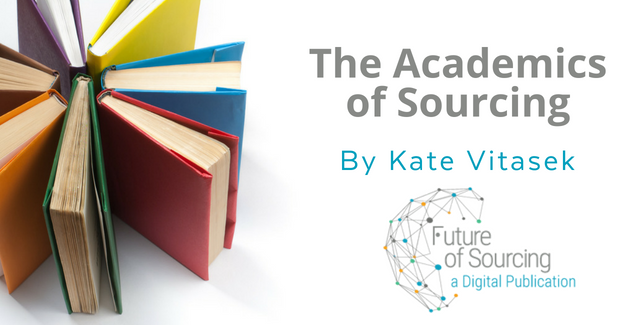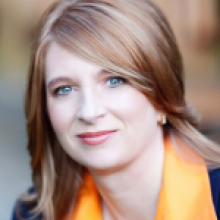In anticipation of the return of Kate Vitasek’s column “The Academics of Sourcing,” Outsource is pleased to showcase some of her best articles from the archives.
“The Academics of Sourcing” is a series that regularly shares some of the best academic insights and translates the learnings from academia into sound advice for practitioners.
Read on to get reacquainted with Kate Vitasek’s insight and experience into the world of sourcing and the academics behind it.
Next up in my series of columns about the great academic thought leaders who were seminal in the development and success of modern outsourcing are two of my favorite game theorists: the mathematician and Nobel laureate John F. Nash, who took economists a step or two beyond Adam Smith with his ideas on game theory and the art of collaborating, or playing together nice, for the win-win; and Robert Axelrod, who verified the beauty of cooperation through his early work with computers to solve a classic game theory behavioral experiment.
Nash’s and Axelrod’s conclusions fit squarely into an essential tenet of Vested Outsourcing – that is that playing cooperatively from the start of a business or contract relationship to achieve mutually beneficial goals is good for everyone and will almost always achieve the best result.
If you’ve seen the movie "A Beautiful Mind," which is loosely based on the life of Nash, there’s a brief scene in it that captures in an entertaining nutshell his great breakthrough in the use of games – especially non-cooperative games – as a basis for understanding complicated economic issues.
In the scene Nash, portrayed by Russell Crowe, has a revelatory moment in a campus bar as he and his mates ponder the best ways to produce optimum results in their approach and pursuit of a beautiful blonde and her friends. Nash’s inspiration was that Adam Smith’s principle that the “best result comes from everyone in a group doing what’s best for themselves” was incomplete and needed revision: the best result comes from everyone in a group doing what’s best both for themselves and the group.
Whether or not it really played out as portrayed in the movie, Nash introduced the distinction between cooperative games, in which binding agreements can be made, and non-cooperative games, where binding agreements are not feasible. He developed an equilibrium concept for non-cooperative games that later came to be called the Nash Equilibrium.
Simply stated, he demonstrated – ahem, by doing the math! – that companies that work together will discover that the sum of the parts can be better when combined effectively than if they work at cross-purposes.
Nash received the Nobel Prize in 1994 for his work and the related work of two others who shared the prize with him that year, John C. Harsanyi and Reinhard Selten. Their work spurred an entire branch of economic science that’s known as "game theory."
Game theorists have been studying the economics of playing non-zero sum, or win-win, games for more than 50 years to show that playing nice is indeed good for you. Since Nash’s Nobel Prize there have been seven more Nobel Prizes awarded to game theorists.
Another game theory pioneer, Robert Axelrod, verified that cooperation and “playing nice” in the business world, and for that matter in life, is the best and most successful way to operate...and he did this with a computer contest he devised more than 50 years ago!
Axelrod demonstrated how cooperation can emerge, grow and persist by applying game theory and computer simulation solutions to a thought experiment, the Prisoner’s Dilemma. He found that playing nice is the best strategy. The Prisoner’s Dilemma scenario is a classic problem in game theory that illustrates the advantages and disadvantages of cooperation.
Using gigantic computers that filled rooms back in the early 1960s, he showed there are circumstances in which even selfish people are inclined and induced to cooperate in difficult or hostile situations, and not betray others or retaliate, in order to achieve the best possible results.
Axelrod, the Walgreen Professor for the Study of Human Understanding at the University of Michigan, eventually developed what is known as cooperation theory and his book, The Evolution of Cooperation (1984), popularized the study of cooperation.
Axelrod’s solution to the prisoner’s dilemma, by the way, was elegant, simple and, well, really nice! It’s based on the idea and the old adage that one good turn deserves another by intentionally avoiding oppositional behavior.
Using game theory to predict the outcome of economic interactions is an essential tool to achieve performance-based, win-win outsourcing arrangements.
Many companies that outsource operate under the mistaken belief that if something is good for the service provider it is by definition bad for them. Both sides can and do play this game to no one’s advantage.
The lessons of Nash and Axelrod are simple but very profound: playing a game cooperatively to achieve a mutual goal is always better than playing it with self-interest in mind. Working together towards a win-win strategy is always better than a win-lose strategy aimed at promoting self-interest.
A true win-win approach requires effort and commitment by all parties. It’s not a contest, a game of one-upmanship or an abdication by one party. Outsourcing under a Vested approach is a partnership with regular, frequent communication to manage the expectations of everyone as well as the work.
Nash’s work was vital because he showed the value of reaching equilibrium, or win-win solutions and outcomes in difficult scenarios, as the way to achieve successful business and outsourcing partnerships. Axelrod’s work proved game theory’s essential point.






